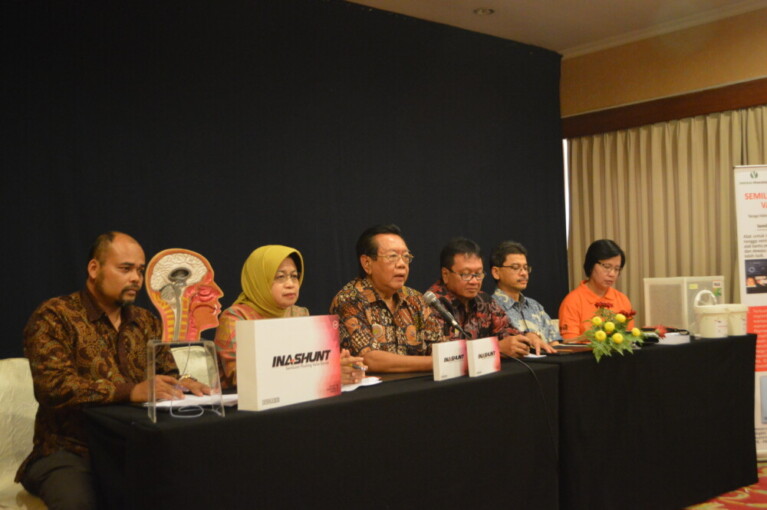
Universitas Gadjah Mada (UGM) launched innovation products of excellence in health area during the celebration of National Technology Awakening Day (HAKTEKNAS) that was held in Manahan Stadium in Solo from 9- 13 August 2016.
The product comes in the form of a therapy device for hydrocephalus patients, called as INA Shunt, that was developed by neurosurgeon from UGM Faculty of Medicine, Dr.dr. Paulus Sudiharto, Sp.BS(K). INA Shunt was developed since 1978 and being patented in September 2009. It is already installed in some 10 thousands of patients in Yogyakarta, ranging from 11-day old infant to senior citizens and who have different causes of the disorder.
It all started from the concerns that the available hydrocephalus therapy devices were of imported ones which were expensive.
“This device is a tube with semilunar valves to flow the fluids from the brains,” said Sudiharto on Tuesday (9/8) alongside the HAKTEKNAS events. The semilunar valves will prevent the fluid to flow back to the brains, also regulates the flow so as not to hamper patient’s activities. “It’s equipped with anti-slip knob to anticipate against possible suction of the cathether into the brain chambers that may be fatal,” he said.
A connector is also installed to minimise the operation area if cathether extension is needed. Made from materials that have passed toxicity tests, it can reduce complications possibilities.
Head of Indonesian Association of Neurosurgery, Dr.dr. Endro Basuki, mentioned the need for this device in the country was big at six thousand patients annually. He said, “There is the possibility to export this product,” adding that INA Shunt would be registered in the e-catalouge of National Health Insurance (BPJS) that would allow free of charge therapy and installment for patients.
They work with PT. Phapros, Tbk., that will market the product. Director of Pt. Phapros, Barokah Sri Utami, said INA Shunt would be sold at an affordable price around Rp2-3 millions.
“INA Shunt is a health product with big potential; so we encourage the use of this device in all hospitals in Indonesia,” she said.
Wolbachia Mosquito to Control Dengue Fever
The Aedes aegypti mosquito containing Wolbachia bacteria that is able to control dengue fever is also showcased in the HAKTEKNAS events in Solo. Developed by Eliminate Dengue Project Yogya (EDP-Yogya) team from Faculty of Medicine UGM and supported by Yayasan Tahija Indonesia is an innovation to control dengue fever in the country.
“When the Aedes aegypti mosquito with Wolbachia bacteria is released and mates with other Aedes aegypti mosquito, the eggs it produces would no longer contain dengue virus. Thus, dengue fever spread can be prevented,” said a researcher from EDP Yogya, Prof. dr. Adi Utarini.
The lecturer at Faculty of Medicine said that they planned to release the mosquito with Wolbachia by the end of August to wider areas by putting mosquito offsprings every 50 meter in the neighbourhood. Previously, they had released it to four hamlets in Sleman and Bantul regencies.
“The result is that the mosquito with the Wolbachia can breed and sustain naturally. It also has the ability to suppress the dengue virus growth in the body of the mosquito,” she said.
Adi Utarini mentioned that after treatment, the spread of dengue fever in those four hamlets had dropped significantly.

